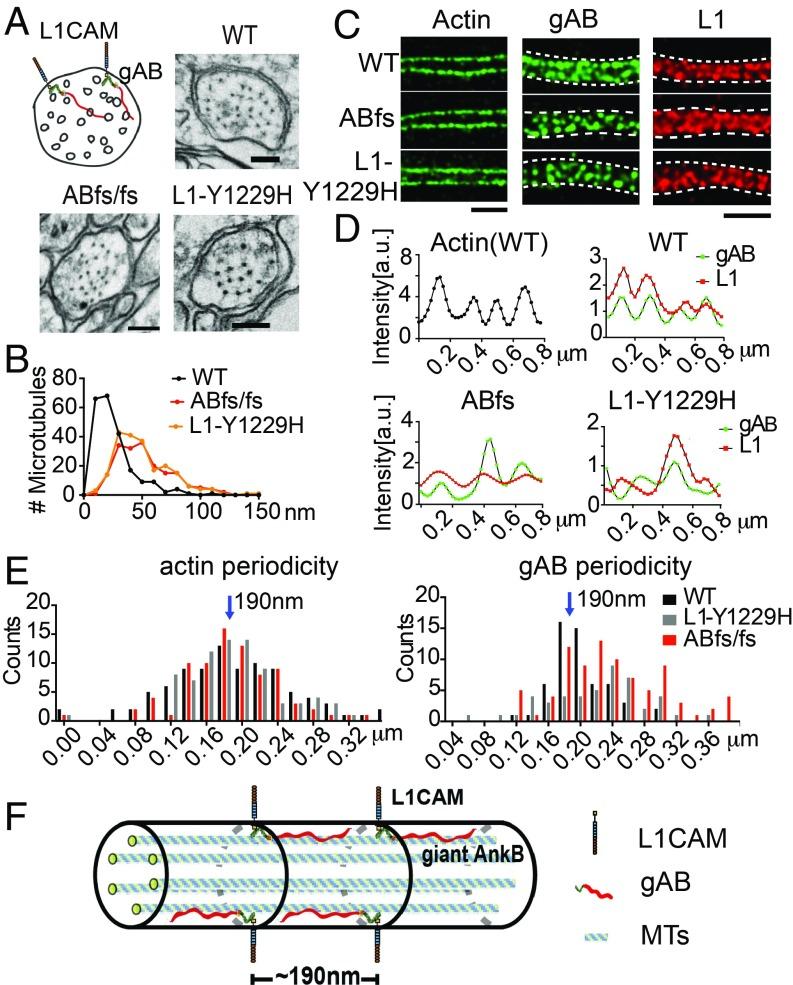
Giant ankyrin-B (ankB) is a neurospecific alternatively spliced variant of ANK2, a high-confidence autism spectrum disorder (ASD) gene. We report that a mouse model for human ASD mutation of giant ankB exhibits increased axonal branching in cultured neurons with ectopic CNS axon connectivity, as well as with a transient increase in excitatory synapses during postnatal development. We elucidate a mechanism normally limiting axon branching, whereby giant ankB localizes to periodic axonal plasma membrane domains through L1 cell-adhesion molecule protein, where it couples microtubules to the plasma membrane and prevents microtubule entry into nascent axon branches. Giant ankB mutation or deficiency results in a dominantly inherited impairment in selected communicative and social behaviors combined with superior executive function. Thus, gain of axon branching due to giant ankB-deficiency/mutation is a candidate cellular mechanism to explain aberrant structural connectivity and penetrant behavioral consequences in mice as well as humans bearing ASD-related ANK2 mutations.
Citation: Yang, R., Walder-Christensen, K. K., Kim, N., Wu, D., Lorenzo, D. N., Badea, A., Jiang, Y. H., Yin, H. H., Wetsel, W. C., & Bennett, V. (2019). ANK2 autism mutation targeting giant ankyrin-B promotes axon branching and ectopic connectivity. Proceedings of the National Academy of Sciences of the United States of America, 116(30), 15262–15271. https://doi.org/10.1073/pnas.1904348116
